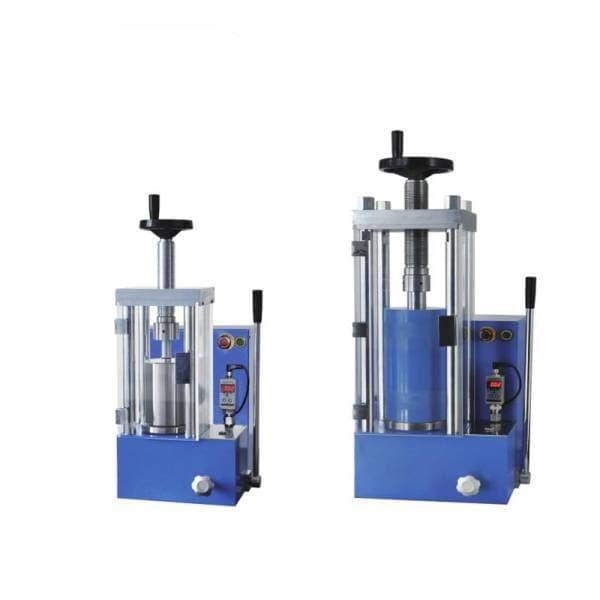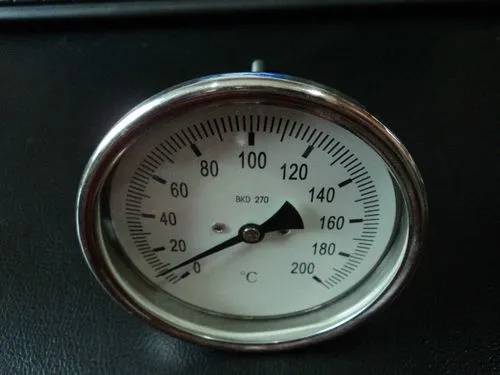Introduction to Warm Isostatic Press
Warm Isostatic Press is a type of high-pressure processing that uses heat and pressure to densify materials. It is a popular method of producing high-quality, near-net-shape components from ceramics, metals, and other materials. During the process, the material is placed in a sealed container and subjected to high pressure, while being heated to a specific temperature. This process reduces the porosity in the material, which results in a denser and stronger product. Compared to other methods of isostatic pressing, warm isostatic pressing offers a more efficient and cost-effective way of producing high-quality components with complex shapes.
Table of Contents
Benefits of Using Warm Isostatic Press
Warm Isostatic Press (WIP) is a valuable tool in the manufacturing and engineering industries due to its numerous benefits. When using WIP, several key factors must be considered to ensure the best results, such as the temperature and pressure applied to the material being pressed.

Improved Uniformity
One of the most significant benefits of using WIP is the ability to create parts with a high level of uniformity and consistency. This is because WIP applies pressure evenly across the entire surface of the material being pressed. As a result, parts produced with WIP have consistent density and are free from defects.
Ability to Create Complex Shapes
WIP can be used to create parts with complex shapes and geometries, which would be difficult or impossible to achieve using other manufacturing techniques. The flexibility of the envelope die used in WIP allows for the production of intricate parts with high precision.
Improved Mechanical Properties
Another benefit of using WIP is the ability to create parts with improved mechanical properties. By increasing the density of the material, WIP can improve its strength, toughness, and resistance to wear and tear. This makes WIP particularly useful for creating parts that need to withstand high temperatures, pressures, or other extreme conditions.
Suitable for a Wide Range of Materials
WIP is suitable for use with a wide range of materials, including ceramics, metals, and plastics. This makes it a versatile tool for a variety of applications in different industries.
Time and Cost-Efficient
WIP is a time and cost-efficient manufacturing technique compared to other methods. It can produce high-quality parts with minimal waste, reducing the need for additional processing and post-production finishing.
In conclusion, the benefits of using WIP include improved uniformity, the ability to create complex shapes, improved mechanical properties, versatility in usage, and time and cost-efficiency. These benefits make WIP a powerful tool for creating high-quality, durable parts that meet the demands of today's industries.
Warm Isostatic Laminator for High-Quality Ceramic Electronic Components
Creating high-quality ceramic electronic components requires a precise and reliable process. One of the key equipment used in this process is the warm isostatic laminator (WIL). Let's take a closer look at this equipment and its importance in producing high-quality ceramic electronic components.

What is a Warm Isostatic Laminator?
A warm isostatic laminator is a type of equipment used in the process of creating ceramic electronic components. It works by applying heat and pressure to a ceramic powder mixture to create a solid, high-density material that can be shaped and finished to meet specific requirements.
Factors to Consider When Using a WIL
When using a warm isostatic laminator, several key factors need to be considered to ensure the quality of the finished components. These factors include:
Proper Calibration and Maintenance
It is important to ensure that the WIL is properly calibrated and maintained to ensure consistent and reliable results. This includes regular checks of the temperature and pressure settings, as well as the condition of the equipment.
Temperature and Pressure Settings
The temperature and pressure settings must be carefully controlled to avoid damaging the components or affecting their electrical properties. The optimal temperature and pressure settings will depend on the specific ceramic powder mixture being used.
Composition and Size of Components
The composition and size of the components must also be taken into account, as these factors can impact the effectiveness of the WIL process. The mixture of ceramic powders used should be carefully selected to achieve the desired properties and characteristics of the finished component.
Environmental Conditions
Lastly, it is important to consider the environmental conditions in which the equipment is being used. Factors such as humidity and air quality can affect the quality of the finished components, so it is important to ensure that the WIL is used in a controlled environment.
Conclusion
A warm isostatic laminator is an essential piece of equipment in the production of high-quality ceramic electronic components. By carefully considering the factors mentioned above and using a properly calibrated and maintained WIL, manufacturers can create components that meet the exacting standards required for use in a range of industries.
Importance of Material Characterization in Isostatic Pressing
Isostatic pressing is a powerful tool in the field of material science that can be used to improve the properties of a wide range of materials. However, to ensure the success of the process, it is essential to consider several key factors before and during the process. One of the most critical factors to consider is material characterization, which involves understanding the physical and chemical properties of the material being processed.
Understanding Material Properties
Material characterization is a vital component of the isostatic pressing process. It involves understanding the mechanical properties, chemical composition, and microstructure of the material. By characterizing the material, it is possible to determine the ideal processing parameters, such as temperature and pressure, to achieve the desired material properties.
Identifying Potential Issues
Material characterization also helps to identify any potential issues that may arise during the isostatic pressing process, such as cracking or deformation. By understanding the material's behavior under high pressure and temperature conditions, it is possible to optimize the process and ensure a successful outcome.
Material Type and Particle Size
Material characterization involves considering several key factors, including the material type, its particle size, shape, and distribution. These factors can affect the material's behavior under high pressure and temperature conditions and influence the final product's properties.
Pressure and Temperature Conditions
Another critical factor to consider is the pressure and temperature conditions during the isostatic pressing process. Understanding the material's behavior under these conditions is essential to optimize the process and achieve the desired material properties.
In conclusion, material characterization is a vital component of the isostatic pressing process. By understanding the material's properties and behavior, it is possible to optimize the process and achieve the desired material properties. Isostatic pressing is a powerful tool in the field of material science, and with the right material characterization, it can be used to improve the properties of a wide range of materials.
Factors to Consider When Using Warm Isostatic Press
When using a warm isostatic press (WIP), there are several key factors to consider ensuring the best results. Here are some of the most important factors to keep in mind:

Temperature and Pressure Settings
The temperature should be carefully monitored and controlled to ensure that it remains within the optimal range for the material being processed. Similarly, the pressure applied should be carefully calibrated to ensure that it is sufficient to achieve the desired results without causing damage to the material.
Design of the WIP
It is also important to consider the design of the WIP itself. Factors such as the size and shape of the pressure vessel, as well as the type and quality of the seals used, can all have a significant impact on the overall performance of the WIP. Proper maintenance and calibration of the WIP is essential for consistent and reliable results.
Expertise and Experience of the Operator
The WIP requires a skilled and knowledgeable operator in order to achieve the best results. Like any complex piece of laboratory equipment, the WIP requires a proper understanding of its operation, maintenance, and calibration. It is important to ensure that the operator is well-trained and experienced in using the WIP to avoid any accidents or damage to the equipment.
Material Properties
The properties of the material being processed also play a significant role in determining the success of the WIP. Materials with high melting points, for example, may require higher temperatures and pressures to achieve the desired results. Similarly, materials with complex geometries or delicate structures may require more specialized processing techniques to avoid damage.
Post-Processing Considerations
Finally, it is important to consider the post-processing steps that may be necessary after the material has been processed in the WIP. Depending on the material and the desired outcome, additional processing steps such as annealing or machining may be necessary to achieve the desired final product.
By carefully considering these key factors, laboratory professionals can ensure that they are using their WIP effectively and efficiently, and that they are achieving the best possible results for their research or production needs. Proper maintenance and calibration of the equipment, as well as ongoing training and education for operators, can also help to ensure consistent and reliable performance over time.
Conclusion
In conclusion, warm isostatic press technology has proven to be an effective method for achieving high-quality ceramic electronic components. The use of warm isostatic lamination allows for uniform pressure distribution, resulting in parts with improved mechanical properties and reduced defects. However, it is essential to consider various factors, such as temperature, pressure, and material properties, when using warm isostatic press equipment. By following proper standard operating procedures and conducting material characterization tests, manufacturers can ensure the production of high-quality components. Overall, warm isostatic press technology is a valuable tool in the manufacturing industry, providing a reliable and efficient solution for the production of complex ceramic components.
Related Products
- Warm Isostatic Press WIP Workstation 300Mpa for High Pressure Applications
- Warm Isostatic Press for Solid State Battery Research
- Cold Isostatic Pressing Machine CIP for Small Workpiece Production 400Mpa
- Manual Cold Isostatic Pressing Machine CIP Pellet Press
- Electric Lab Cold Isostatic Press CIP Machine for Cold Isostatic Pressing












